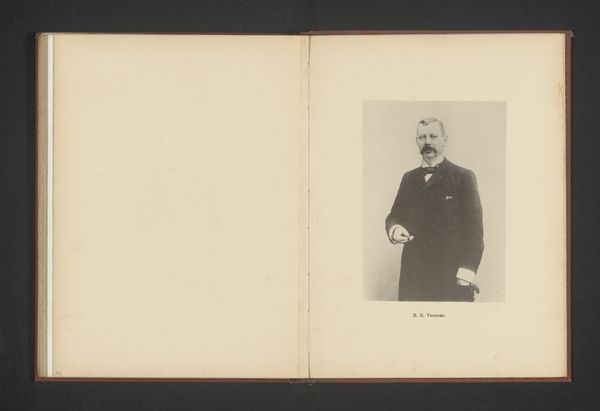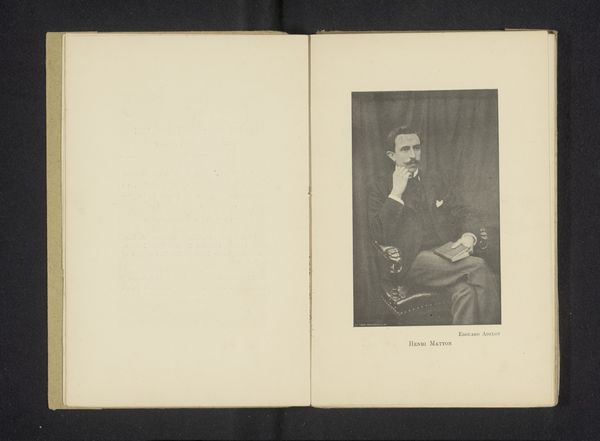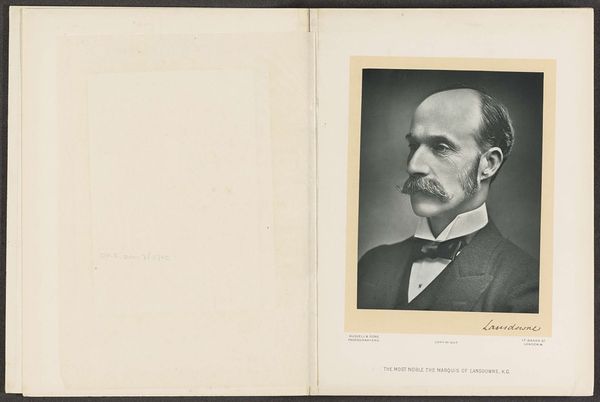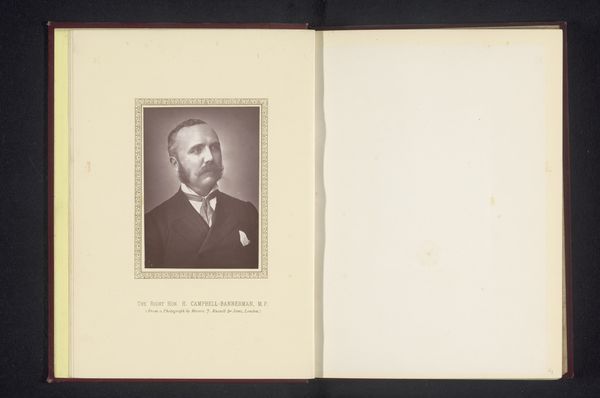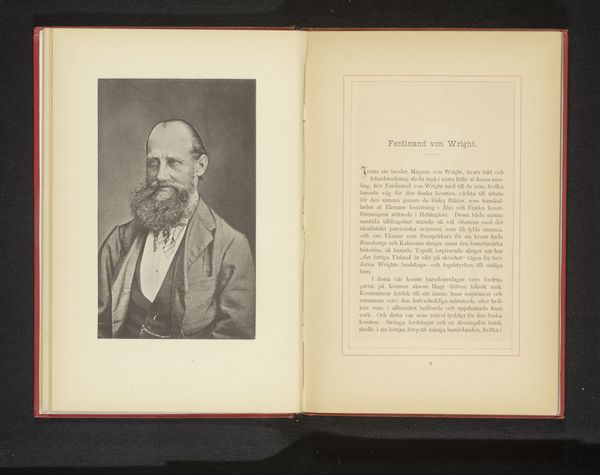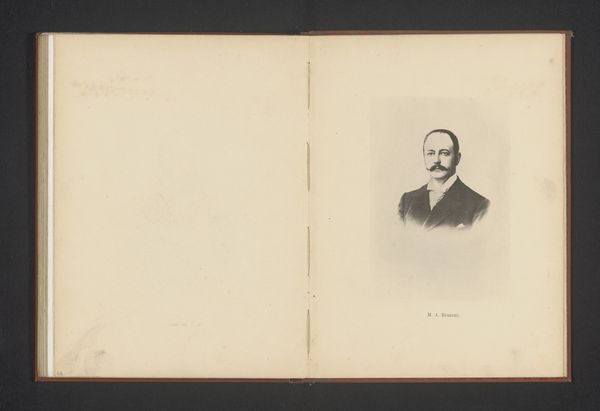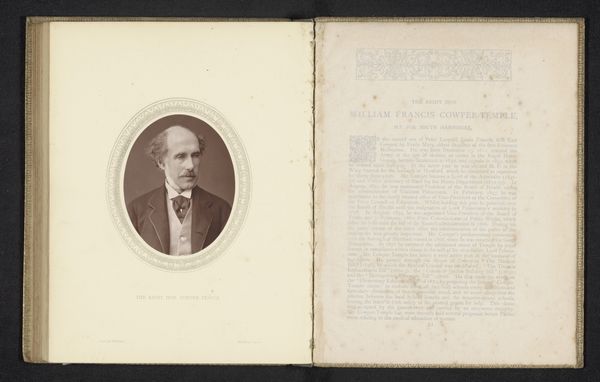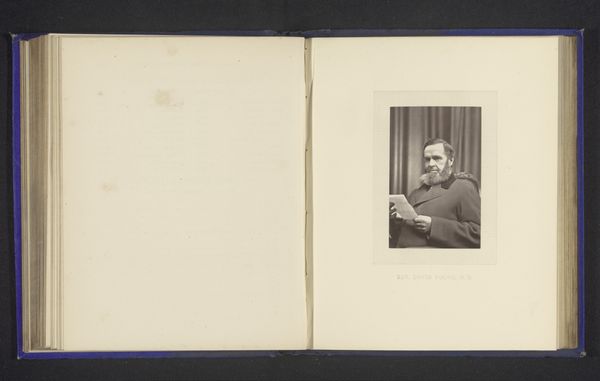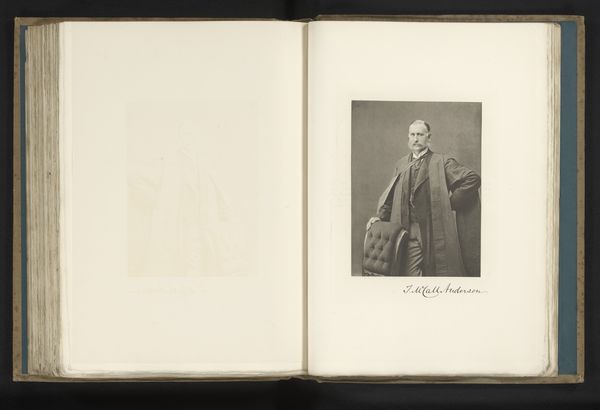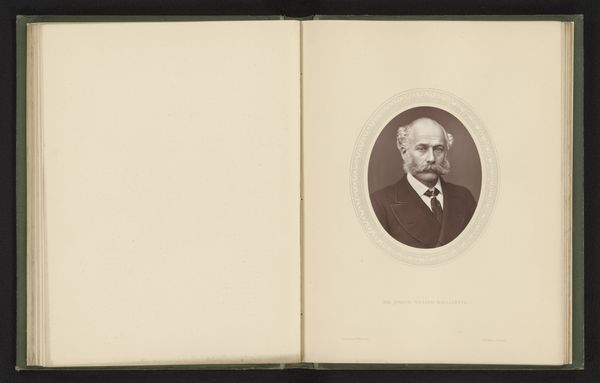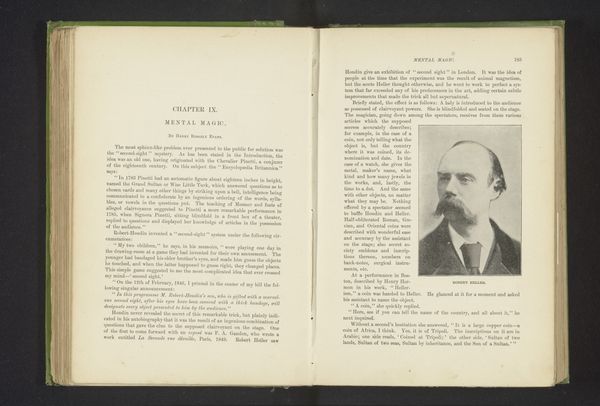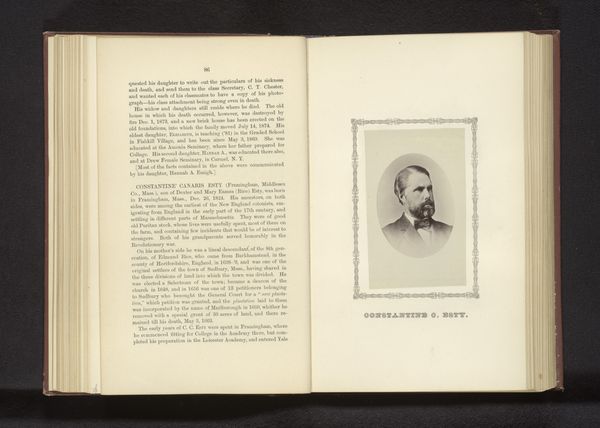
photography, gelatin-silver-print
#
portrait
#
photography
#
gelatin-silver-print
Dimensions: height 127 mm, width 95 mm
Copyright: Rijks Museum: Open Domain
Curator: This dignified image before us is a portrait of Merton S. Keith, an educator of Helen Keller, captured in a gelatin-silver print by William Notman, likely sometime between 1885 and 1891. There’s a strong feeling of stability emanating from this man. Editor: Yes, a stability forged by careful attention to detail and control of process. The silver gelatin printing method offered remarkable tonal range—we see it especially in the subtle gradations around his face and suit. The sharp detail achieved allows us an intimate connection. This highlights his position but also hints at class dynamics and the work required to capture the portrait in the studio. Curator: It certainly projects authority, doesn’t it? The man exudes Victorian confidence and progress. A detail I see, however, which adds complexity, is the bow tie. Its flamboyant butterfly shape clashes just a touch with his stern gaze. Is there something subversive being hinted at there? Or just fashionable flare? Editor: I appreciate that reading. Looking at it in material terms, one thing that intrigues me is this photo appearing on a page next to printed text, bound together as part of what seems to be a book. Consider how photographs began circulating differently at this time. How did it operate both as an artistic endeavor and form part of bookbinding work to mass distribute this image through its reproduction and bind together the words of college texts. Curator: Intriguing to think about how portraiture also served didactic purposes, functioning not just to reflect one person, but to transmit ideas, values. Helen Keller became a cultural symbol, and here, Notman might be attempting to suggest something essential about teaching and pedagogy of the time, through its association with his image. Keith, in a sense, embodies something new: the modern teacher. Editor: Exactly. The very process used here—the means of production itself—speak to that shift. Consider Notman’s wider operation, producing hundreds of images per day: it transformed photographic portraiture itself. Curator: We tend to frame figures as progressive icons. What is being obfuscated within the photographic images, materials, and production processes of an industrialized age, which often require their exploitation? Editor: We’re right to consider that dialectic in looking at its final print: how this man's image participates within broader political and economic realities of photography's role within expanding media practices. It can illuminate not just surface but material depths of a visual culture during this period.
Comments
No comments
Be the first to comment and join the conversation on the ultimate creative platform.
